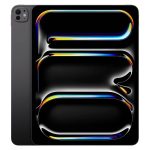
The Falcon Northwest Tiki is a premium PC package, from building your custom PC to the customer service to the build itself. Everything screams “luxury.” But, how does this custom PC handle my “beefy” PC?
“Oh my.”
— George Takei
Plenty of you in the comments section will argue that one system is better than the other because of “Company X” or “Technology X” — or to discuss amongst each other. To reassure our readers, we worked directly with the president of Falcon Northwest, Kelt Reeves, to build a PC that would be as close as my own but would offer the opposing parts needed to receive a fair assessment of where each one shines and where each one would dive.
A Brief History of Falcon Northwest’s Tiki Mini PC & AMD
But before we get into the details, let’s take a recap and tell you the exact reason why we suddenly got interested in this particular system by Falcon Northwest. For those of you who have been following us for the past few years, you might definitely remember the launch of AMD’s Fury GPU lineup. The Fury series was regarded for its stunning engineering that reduced the overall size of the product to be accommodated within small form factor PC chassis.
During that time, Falcon Northwest was the first to showcase AMD’s flagship graphics card at the time, the Radeon R9 Fury X2 within their Tiki Mini PC. Although the graphics card never got a consumer variant, it did end up in the Radeon Pro Duo year’s the then-latest Fiji XT GPU cores. The PC was showcased during AMD’s own launch event at GDC and VRLA EXPO back in 2016.
Now fast forward to 2022, 6 years later, Falcon Northwest is now offering its Tiki Mini PC with the fastest graphics card from AMD, the Radeon RX 6950 XT. The graphics card featured within the SFF PC isn’t a custom model but a reference ‘Black Edition’ design which slots in perfectly with your choice of Intel and AMD CPU specs. The AMD Radeon RX 6950 XT has already proven itself to be a worthy GPU with performance on par or even exceeding NVIDIA’s fastest GeForce RTX 3090 Ti card in several games. This inspired us to take a look at Falcon Northwest’s flagship all-AMD system and what kind of performance it has to offer.
Falcon Northwest Tiki Mini PC 2022 Specs On First Glance
So starting off with the test setup, first, let’s pull up both specs for the two systems to show what we are looking at for the remainder of the review. If you saw my recent review of the Alienware 34″ QD-OLED ultrawide gaming display, I posted my system specs, which I will place side-by-side with the Tiki from Falcon Northwest.

As you can see from the above table, it is Intel and NVIDIA against a predominantly whole AMD-powered machine.
Before diving into the internals, let’s discuss the case for the Falcon Northwest Tiki PC.

The all-metal case, which is quite durable, measures 10.2cm x 33.1cm x 34.5cm (with the bottom base removed). On the top are two USB 3.2 Gen 1 Type-A ports, a USB 3.2 Type-C port, and a 3.5-inch audio jack. I appreciate how it keeps cables out of place by putting them on the top of the case, and I could see how it might deter from the look of the front of the case, but I think I would have liked the placement on the front side instead on top.
The Falcon Northwest logo adorns the front of the case, with bright RGB colors that the ASUS AuraSync application can control. The finish is all black, and the only areas that show are the power button on the top, the Falcon Northwest logo on the front, and the GPU lights. Outside, this will blend into the background, allowing you to focus on work or play.

2 of 9

There are tons of cooling sections on the case, with perforations to help adequately dissipate the CPU and GPU heat. However, I did find that it catches dust much easier due to the compact nature of the case. The company has prepared for this. With every purchase, you receive a booklet explaining everything about the system, including maintenance and other details.

To get into the insides of the Falcon Northwest Tiki, you must look on the rear of the case, and there are two thumbscrews with springs to make it easier to remove the right side cover and place it back on just as quickly.
The Falcon Northwest Tiki PC offers the AMD Ryzen 9 5900X processor and a 12-core CPU focused on users that require heavy multi-threading performance on AM4 sockets. The chip features a base clock of 3.7 GHz and a boost clock of up to 4.8 GHz. The total cache on the chip is 70 MB with a TDP of 105W.
2 of 9
To complement the AMD Ryzen 9 5900X processor, Falcon Northwest offers the ASUS ROG STRIX X570-I Gaming, a mini-ITX board with digital VRM comprising 8+2 power stages that pack a serious punch for a smaller form factor. Included on the motherboard is a heatsink with an enclosed fan and attached metal backplate to ensure that heat is adequately dissipated.
The VRM fan is perfect for the Falcon Northwest Tiki PC in cases with limited airflow, and the fan prevents overheating efficiently. An additional heatsink has copper heat pipes to enhance the dissipation of the heated area with a topside fan. Finally, the board offers an AIO pump header with a hybrid fan header. The ASUS ROG Strix X570-I Gaming motherboard offers a PCIe x16 SafeSlot and dual M.2 slots that are wired for additional bandwidth and support for PCIe 4.0 graphics cards and NVMe SSDs.
2 of 9
The AMD Radeon RX 6950 XT is decked with the Navi 21 KXTX GPU in its fully-enabled die config featuring 80 Compute Units (CUs), or 5120 SPs. The card features 16 GB of GDDR6 memory across a 256-bit bus interface. There are also 80 Ray accelerators for ray-tracing enablement on the graphics cards (one RA per CU). The AMD Radeon RX 6950 XT GPU operates a base clock of 2.1 GHz and a boost clock of 2310 MHz. The graphics card also offers 23.65 TFLOPs of peak FP32 performance.
In addition to the 16 GB memory, the Radeon RX 6950 XT graphics card features 128 MB of Infinity Cache on the GPU die. The cache will help boost bandwidth for higher performance at resolutions beyond 1080p HD. The 128 MB Infinity Cache boosts the standard 512 GB/s bandwidth by 3x, delivering an adequate bandwidth of up to 1.728.2 TB/s. The graphics card will feature 18 Gbps GDDR6 memory dies, providing a proper bandwidth of 576 GB/s. The card also utilizes a 335W TBP. The reference model is used here and comes in a 2.5 slot form factor with dual 8-pin connectors to boot. This system can be upgraded with a next-gen graphics card of a similar size and power input.

The outputs for the AMD Radeon RX 6950 XT offer a single HDMI, two DisplayPorts, and a mini DisplayPort. For this testing, we will be using HDMI.

The Kingston FURY Renegade RGB DDR4 memory allows for increased frame rates and superfast speeds of up to 5333MHz paired with quick CL12-CL20 timings. These are generally optimized for Intel chipsets but are an all-around great DDR4 RAM that you cannot go wrong with any compatible system configuration.
The Samsung 980 Pro is available with a custom Elpis controller, V-Nand, and DRAM. The Samsung 980 Pro offers sequential read and write speeds of up to 7,000 MB/s and 5,000MB/s, respectively as well as random read and write speeds of up to 1,000K IOPS.
The Samsung 870 QVO is a perfect secondary drive as it offers ample storage for your other programs and can withstand 720 TBW, which means Samsung meant this SSD to last.
The SilverStone SX SFX-L Platinum 1000W power supply uses an ultra-quiet 120 mm fan, which uses intelligent RPM control to guarantee superb performance and maintain a near-silent operation. The fan features a fanless mode, which stops the fan if the PSU’s workload reaches as low as 20%. The installed fan uses a dual ball bearing allowing for a large amount of reliability alongside the near-silent operation.
3DMark Time Spy CPU Performance
3DMark Time Spy is a widely popular video card benchmark test for Windows designed to measure a computer’s gaming performance. While the overall benchmark is great, the utility also provides a good indication of the processor’s performance.
Test PC vs. Falcon Northwest Tiki PC (Higher is better)
Blender
Blender is the free and open-source 3D creation suite. It supports the entirety of the 3D pipeline—modeling, rigging, animation, simulation, rendering, compositing and motion tracking, even video editing and game creation.
Test PC vs. Falcon Northwest Tiki PC (Lower is better)
Cinebench R15
CINEBENCH is a real-world cross-platform test suite that evaluates your computer’s performance capabilities. CINEBENCH is based on MAXON’s award-winning animation software CINEMA 4D, used extensively by studios and production houses worldwide for 3D content creation. MAXON software has been used in blockbuster movies such as Iron Man 3, Oblivion, Life of Pi or Prometheus, and many more.
Test PC vs. Falcon Northwest Tiki PC (Higher is better)
Cinebench R20
Cinebench is a real-world cross-platform test suite that evaluates your computer’s hardware capabilities. Improvements to Cinebench Release 20 reflect the overall advancements to CPU and rendering technology in recent years, providing a more accurate measurement of Cinema 4D’s ability to take advantage of multiple CPU cores and modern processor features available to the average user.
Test PC vs. Falcon Northwest Tiki PC (Higher is better)
Cinebench R23
Cinebench is a real-world cross-platform test suite that evaluates your computer’s hardware capabilities. Improvements to Cinebench Release 20 reflect the overall advancements to CPU and rendering technology in recent years, providing a more accurate measurement of Cinema 4D’s ability to take advantage of multiple CPU cores and modern processor features available to the average user.
Test PC vs. Falcon Northwest Tiki PC (Higher is better)
CPU-Z
CPUz is a freeware that gathers information on some of the main devices of your system such as the Processor name and number, codename, process, package, cache levels, Mainboard, and chipset, Memory type, size, timings, and module specifications (SPD), and Real-time measurement of each core’s internal frequency, memory frequency.
Test PC vs. Falcon Northwest Tiki PC (Higher is better)
Geekbench 5
Geekbench 5, the latest major upgrade to Primate Labs’ easy-to-use cross-platform benchmark, is now available for download. Geekbench 5 allows you to measure your system’s power more accurately than ever.
Test PC vs. Falcon Northwest Tiki PC (Higher is better)
PCMark 10
PCMark 10 is a complete PC benchmarking solution for Windows 11. Specifically designed for the full range of PC hardware from netbooks and tablets to notebooks and desktops, PCMark 10 offers thorough Windows PC performance testing for home and business use. The software includes several tests combining individual workloads for basic computing, storage, image, video manipulation, web browsing, and gaming.
Test PC vs. Falcon Northwest Tiki PC (Higher is better)
POV-Ray
The POV-Ray package includes detailed instructions on using the ray-tracer and creating scenes. Many stunning scenes are included with POV-Ray, so you can start creating images immediately when you get the package.
Test PC vs. Falcon Northwest Tiki PC (Higher is better)
SuperPI
Many overclockers use SuperPI to test the performance and stability of their computers. In the overclocking community, the standard program provides a benchmark for enthusiasts to compare “world record” pi calculation times and demonstrate their overclocking abilities. The program can also test the stability of a certain overclock speed.
Test PC vs. Falcon Northwest Tiki PC (Lower is better)
WinRAR
WinRAR is a powerful archive manager. It can backup your data and reduce the size of email attachments, decompress RAR, ZIP, and other files downloaded from the Internet, and create new archives in RAR and ZIP file format.
Test PC vs. Falcon Northwest Tiki PC (Higher is better)
y-Cruncher Compute Benchmark
y-cruncher is a program that can compute Pi and other constants to trillions of digits. It is the first of its kind that is multi-threaded and scalable to multi-core systems. Since its launch in 2009, it has become a common benchmarking and stress-testing application for overclockers and hardware enthusiasts. Do note that the single-thread test uses AVX-512 instructions while the multi-thread test relies on memory and SMT performance as well.
Test PC vs. Falcon Northwest Tiki PC (Lower is better)
Gaming Performance
I chose five games for this test — Assassin’s Creed Odyssey, Cyberpunk 2077, Far Cry Zero Dawn, Horizon Zero Dawn, and Forza 5 — and I was pretty surprised by the results. Both PCs ran at maximum resolution — the Test PC at 3440 x 1440 and the Tiki at 2560 x 1440. The Falcon Northwest Tiki PC outperformed my own with its AMD Ryzen 9 5900X processor and Radeon RX 6950 XT graphics card on Cyberpunk 2077 and Forza 5. However, my PC with an Intel Core i7-12700K CPU and MSI NVIDIA RTX 3080 LHR GPU did much better in Horizon Zero Dawn, reaching almost sixty percent better performance.
Test PC vs. Falcon Northwest Tiki PC
Test PC vs. Falcon Northwest Tiki PC
Test PC vs. Falcon Northwest Tiki PC
Test PC vs. Falcon Northwest Tiki PC
Test PC vs. Falcon Northwest Tiki PC

Both systems’ heat levels were comparable, with the Falcon Northwest topping at 60°C when stressed, while my system beat closer to 64°C. I was afraid that the Tiki would not dissipate heat as well as the HYTE Y60 case that I am using, but I was surprised by the ending result of the two. Also, the running of the two systems was apparent. The test PC was much louder when running daily tasks, whereas the Tiki system was silent during standard workloads. But looking at the size and the hardware it accommodates, it’s an exceptionally good product with great acoustics & thermal performance.

The Falcon Northwest is an expensive system, starting at just above $3000 to well above $5000 for a serious PC that can accomplish any task you can throw at it. The build quality shows next-level attention to detail in looks, form, and performance. While the cost of a computer of this caliber could scare some consumers off, the personalized customer service from Falcon Northwest and assurance of top-quality components for any need imaginable is worth the investment.

The post Falcon Northwest Tiki review: Is the high price worth it? by Jason R. Wilson appeared first on Wccftech.
Powered by WPeMatico















